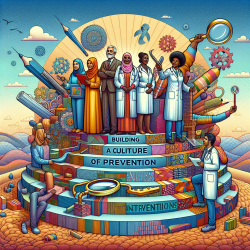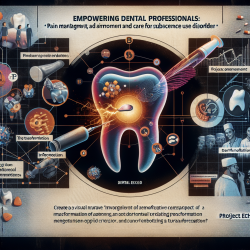Introduction
In today's fast-paced world, prevention is more crucial than ever. The concept of a "culture of prevention" is gaining traction, emphasizing the importance of proactive measures over reactive solutions. This blog explores insights from the research article "Commentary on the Culture of Prevention" and how practitioners can enhance their skills by adopting these principles.
Understanding the Culture of Prevention
The "culture of prevention" is a mindset that prioritizes preventive actions over reactive ones. It involves a collective readiness to address issues before they escalate. This approach has been applied across various sectors, including occupational safety, substance use, and community health. The research highlights that while significant progress has been made in prevention science, there is still a gap in universal acceptance and implementation.
Key Elements of a Culture of Prevention
To foster a culture of prevention, several elements are essential:
- Shared Ownership: Collaboration across communities, practitioners, policymakers, and funders is crucial.
- Building on Existing Resources: Utilize current resources and enhance knowledge about risk factors.
- Bi-directional Communication: Encourage open communication between all stakeholders.
- Sustained Implementation: Implement evidence-based interventions consistently over time.
Challenges and Opportunities
Despite its potential, establishing a culture of prevention faces challenges, particularly in low-income communities where immediate needs often overshadow preventive measures. However, by focusing on prevention, these communities can improve health outcomes and productivity.
Practitioners can play a pivotal role by advocating for prevention strategies, educating communities, and building readiness for change. The research suggests that readiness involves a commitment to change and the capacity to implement new interventions.
Practical Steps for Practitioners
Here are some actionable steps practitioners can take to promote a culture of prevention:
- Educate and Advocate: Raise awareness about the benefits of prevention within your community and among policymakers.
- Collaborate: Work with other sectors to create a unified approach to prevention.
- Implement Evidence-Based Programs: Use proven interventions to address specific health issues.
- Monitor and Evaluate: Regularly assess the effectiveness of prevention strategies and make necessary adjustments.
Conclusion
Building a culture of prevention requires a collective effort and a shift in mindset. By focusing on prevention, practitioners can help create healthier communities and reduce the burden of reactive measures. For those interested in delving deeper into the research, the original article provides a comprehensive overview of the concept and its applications.
To read the original research paper, please follow this link: Commentary on the Culture of Prevention.










